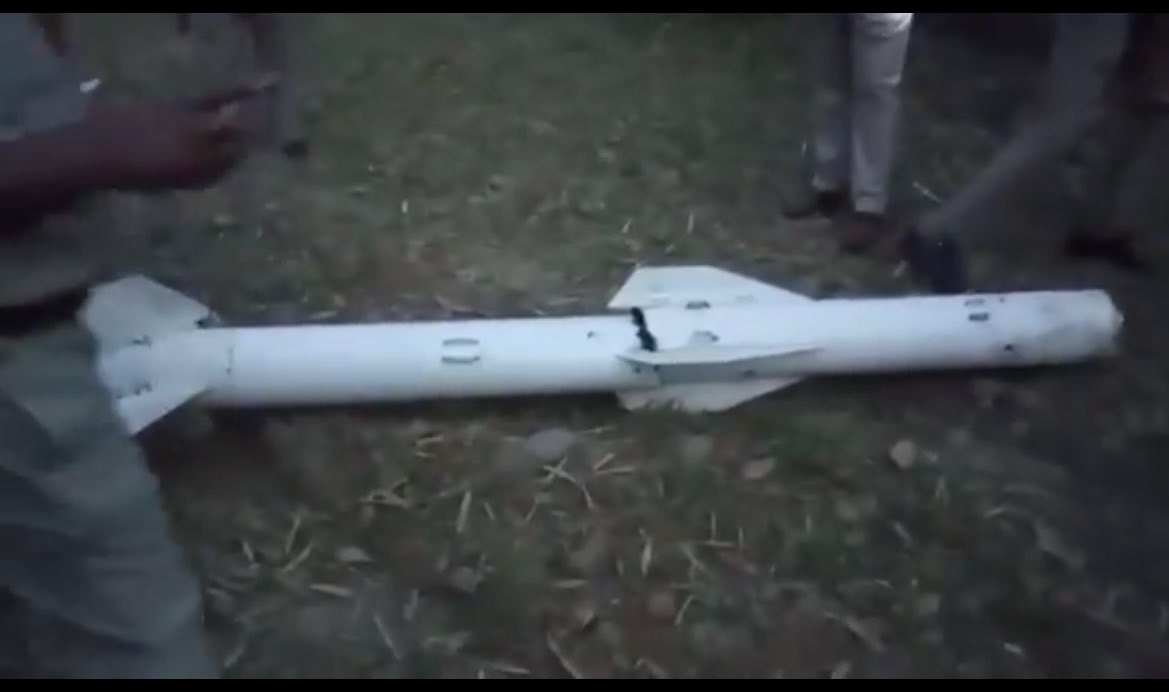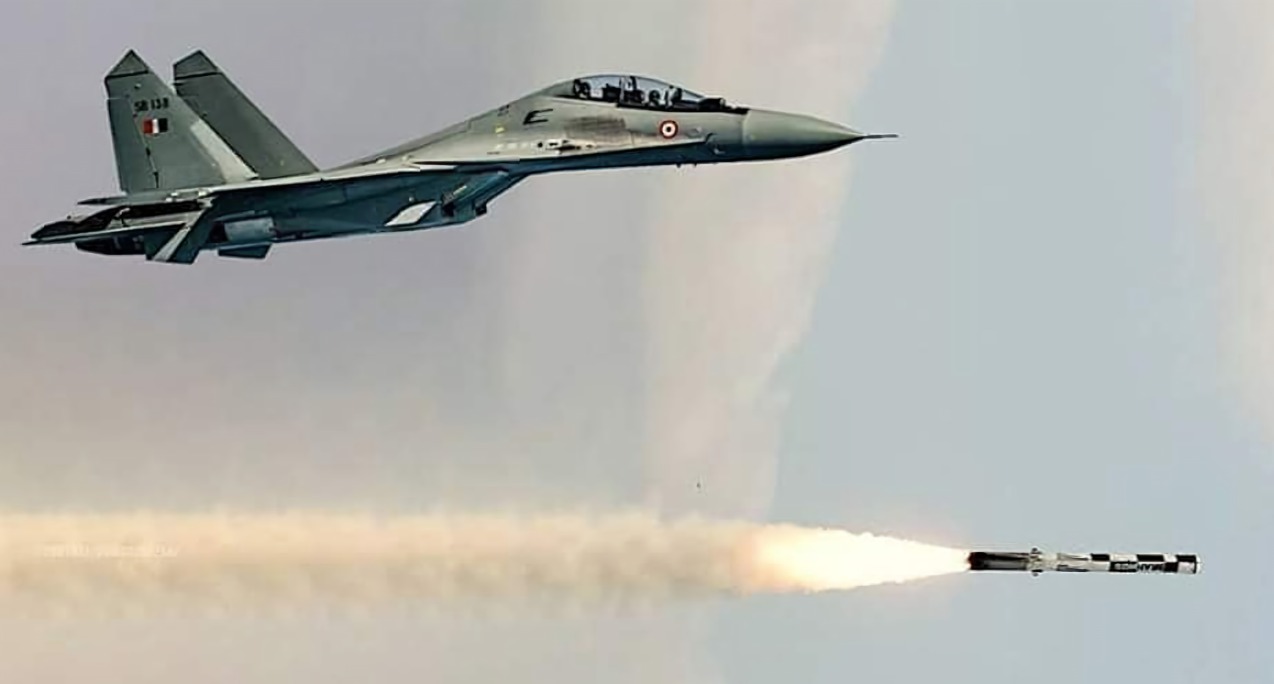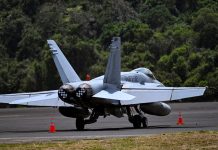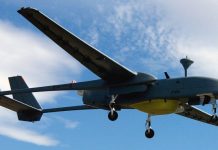The 87-hour war between India and Pakistan in May has yielded a treasure trove of information on Chinese weapons. India laid its hands on an intact Chinese Beyond Visual Range Air-to-Air Missile (BVRAAM) PL-15E, and now its premier defense research organisation is unravelling its secrets.
Media reports claim that India’s Defence Research and Development Organisation (DRDO) is incorporating advanced features of the PL-15 air-to-air missile into its indigenous Astra Mark-2 program.
The recovery of the Chinese-made missile would help the Indian defense establishment to glean important details regarding its capabilities and limitations.
This would be insightful in developing new countermeasures and tactics, techniques, and procedures. While various fragmented PL-15s have been recovered by India, one PL-15E was recovered fully intact in a field near Hoshiarpur, Punjab, on May 9.
Operation Sindoor saw the maiden use of Chinese weapons, including PL-15E, in modern warfare. The missile is likely to have been fired from Pakistani fighter jets – either JF-17 or J-10C.
The missile could not hit the target and fell about 100 kilometers inside Indian territory. As per a Reuters report, the reason the IAF may have lost a few aircraft during the brief war with Pakistan in May might have been an intelligence failure in assessing the real capabilities of the Chinese long-range air-to-air missile, the PL-15.
According to the report, the IAF pilots underestimated the range of the Chinese-made PL-15 missiles. However, India has rejected all Pakistani claims but acknowledged the loss of one Rafale jet due to a technical glitch.
Reports in HT indicated that the export variant of the Chinese missile PL-15, with a range exceeding 200 kilometers, which is considered a rival to the French Meteor, doesn’t have a self-destruct mechanism. The mechanism is present in all Indian air-to-air missiles and saves the critical information about the weapons from falling into the adversary’s hands.
The contours of the analysis have not been revealed. However, the experts say that a weapon will give an insight into how its radar works, how its miniature active electronically scanned array (AESA) radar with advanced propellant maintains speeds exceeding Mach 5, and information about its anti-jamming capabilities.
According to reports, France and Japan have expressed interest in gaining access to the secrets of the PL-15s, and the US could also be interested in decoding the missile.
These countries are keen to know about the missile’s radar signature, motor composition, guidance technology, and possibly even the elusive architecture of its AESA radar.

Squadron Leader Vijainder K. Thakur, an Indian Air Force veteran and a regular contributor to the EurAsian Times, said the PL-15 missile was found intact, suggesting its self-destruct mechanism did not work.
“It is a tech bonanza for India and its allies. The missile has tech issues because the self-destruct didn’t work. It could have other issues. It’s not a mature weapon.”
When asked how this would benefit India and what components it would be most interested in, Thakur said, “It has an AESA seeker, which India is yet to develop. Also, its dual pulse motor may interest DRDO, though DRDO has developed its own.”
Vishnu Som, a noted Defense Journalist, commented on X: “The recovery of an almost intact Chinese PL-15 air-to-air missile is an intelligence coup for India. This missile, fired by a Pak fighter (J-10 or JF-17) flew more than 100 kms to land in the Hoshiarpur area. This missile will be opened up and inspected – the findings could end up giving the IAF a huge edge in the years ahead. You can count on the US asking for a look as well.”
The DRDO intends to make major upgrades to its Astra Mark 1 to build Astra Mark 2. The DRDO intends to build a missile with a range of over 200 km. The missile system is likely to have an upgraded propulsion and improved target acquisition capabilities, ensuring faster interception and greater accuracy.
The project awaits approval from the Ministry of Defence. The BVRAAM will be integrated into the Sukhoi Su-30MKI and the indigenous Light Combat Aircraft (LCA) Tejas fleet.
The Astra Mark-1, presently in service, has a range of over 100 km and has advanced guidance and electronic counter-countermeasure (ECCM) systems.
Drawing lessons from Operation Sindoor, where Indian-made weapons crippled Pakistan’s air bases and claimed to have destroyed about a dozen aircraft, India is keen to develop an upgraded version of the indigenous BVRAAM to help ascertain air dominance.
India’s BVRAAM project is going to have a public-private collaboration. The dual-track production strategy will have the public sector Bharat Dynamics Limited (BDL) managing one manufacturing line. Apart from this, private sector companies like Larsen & Toubro and Tata Advanced Systems will also play a role in the project.
Balancing Power In South Asia
Following Operation Sindoor, both India and Pakistan are bolstering their arsenal. The Pakistan Air Force, following the claimed success of PL-15, is reportedly opting for longer-range PL-17 missiles with ranges exceeding 400 km. PAF is also eyeing about 2,000 YIHA kamikaze drones from Turkey, the HT report claimed.
There have been speculations that Pakistan could acquire forty J-35 Chinese stealth fighter jets, HQ-19 air defense systems, and KJ-500 airborne early warning and control aircraft.
In the Op Sindoor, Indo-Russian BrahMos were also successfully fired by Sukhoi Su-30MKI fighters. Originally developed with a range of 300 km, the supersonic missile can now strike targets over 500 km away, with the air-launched variant capable of even greater reach. India has also started working on the Extended Range BrahMos supersonic cruise missile that has a range of nearly 800 km.

The IAF has also given a nod to buy 114 Rafales under its Medium Role Fighter Aircraft (MRFA) project. This is beside the LCA Mk1A that the force will acquire.
In July 2025, the Indian Defence Acquisition Council (DAC) gave the go-ahead for 10 proposals to buy military hardware, including missiles and electronic warfare systems, worth approximately Rs 1.05 lakh crore through indigenous sourcing.
The nod was given to the procurement of Armoured Recovery Vehicles, Electronic Warfare System, Integrated Common Inventory Management System for the Tri-Services, and Surface-to-Air Missiles.
These procurements will provide higher mobility, effective air defence, better supply chain management, and augment the operational preparedness of the Armed Forces.
- By: Nitin J Ticku & ET Online Desk
- Mail us at: editor (at) eurasiantimes.com




